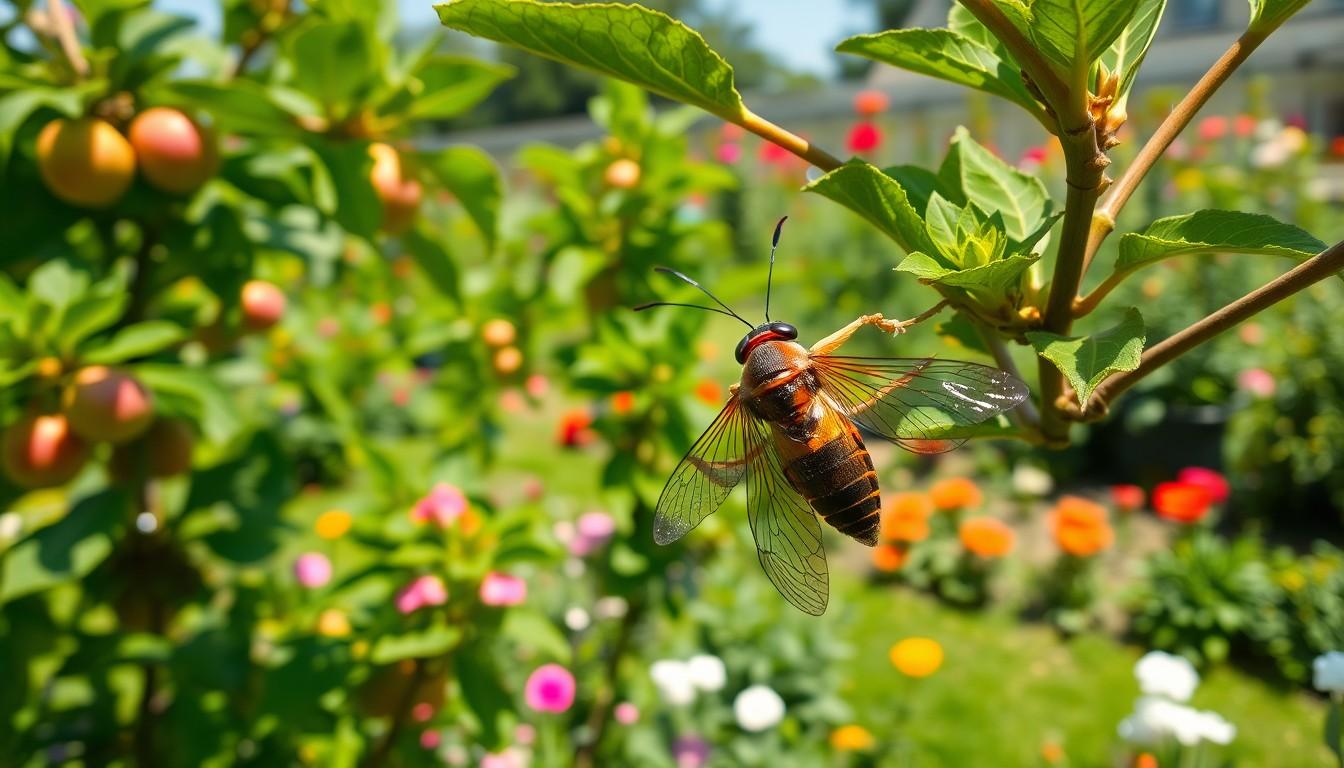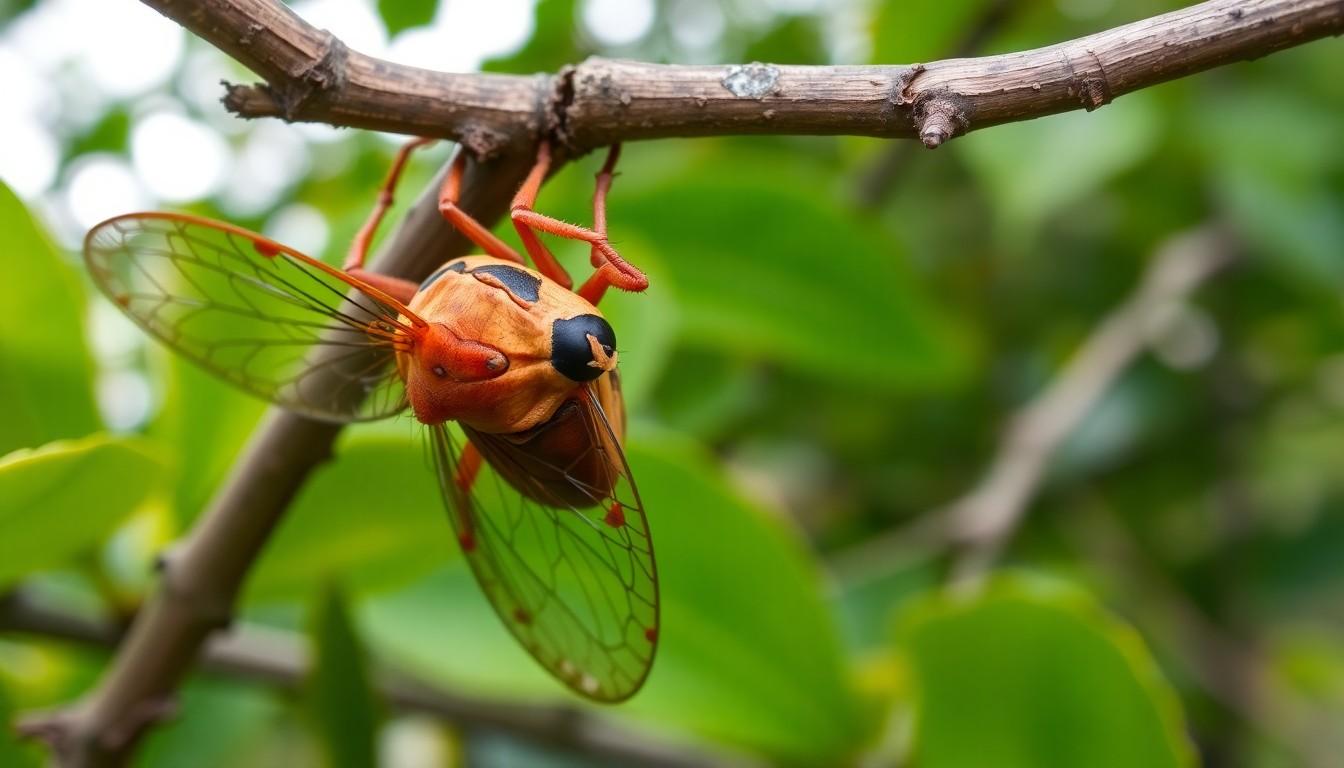The Best Fluffy Pancakes recipe you will fall in love with. Full of tips and tricks to help you make the best pancakes.

Do Cicadas Eat Garden Plants? Surprising Truth Every Gardener Must Know
When cicadas emerge from their underground slumber, they bring a symphony of buzzing that can either thrill or terrify gardeners. But while these noisy critters might be the life of the party, the real question is—are they crashing the garden’s dinner? As it turns out, cicadas have a taste for more than just melodious serenades.
Understanding Cicadas
Cicadas are fascinating insects known for their loud calls and unique life cycles. Their presence can spark curiosity among gardeners about potential plant threats.
Life Cycle of Cicadas
Cicadas undergo a distinctive life cycle consisting of several stages. Eggs are laid in tree branches, where they hatch into nymphs. Nymphs live underground for 2 to 17 years, feeding on plant root fluids. After this extended period, they emerge as adults, shedding their exoskeletons. Adults appear primarily during warm months, often in late spring to summer. Their short-lived adult phase lasts roughly 4 to 6 weeks. During this time, they mate, produce eggs, and return to the trees to continue the cycle.
Types of Cicadas
A variety of cicada species exist, each with unique characteristics. The annual cicada emerges every summer, usually seen around July and August. Periodical cicadas appear in specific cycles, emerging every 13 or 17 years, depending on the brood. Each species presents distinct sound patterns, with some equally loud and persistent. Certain species, such as the Magicicada, stand out for their synchronized emergences, creating a remarkable experience for observers. Understanding these types helps gardeners anticipate cicada behavior and potential impacts on their gardens.
Do Cicadas Eat Garden Plants?

Cicadas primarily feed on tree sap, focusing on the xylem fluid in woody plants. Nymphs, living underground, feed on root sap and nutrients. Adults use their piercing mouthparts to extract sap, favoring larger trees for sustained nutrition. They don’t directly consume garden plants, such as flowers or vegetables, but their feeding behavior can impact plant health.
Feeding Habits of Cicadas
Feeding habits differ between cicada species. Annual cicadas typically feed on sap from hardwood trees. Periodical cicadas prefer certain trees but generally target species like oaks and maples. Nymphs extract nutrients from roots, which can affect root systems. Cicadas don’t eat leaves but their sap consumption might stress plants.
How They Affect Plants
Cicadas can harm plants indirectly. Sap extraction leads to plant stress, causing yellowing leaves and reduced growth. Egg-laying creates wounds on tree branches, making plants vulnerable to diseases. In high numbers, cicadas can cause significant damage. Healthy plants usually recover, but significantly stressed ones may suffer long-term effects. Understanding these impacts helps gardeners take preventive measures.
Identifying Cicada Damage
Cicadas may not directly feed on garden plants, but their activity can cause noticeable harm. Recognizing the signs of infestation helps gardeners take action.
Signs of Infestation
Visible damage presents clearly in affected plants. Look for yellowing leaves, wilting stems, and stunted growth. Cicadas create small puncture wounds when feeding, and these wounds can lead to additional issues such as disease. The presence of nymphs can often be gauged by observing droppings on the ground, which resemble small dark pellets. Another indicator appears when trees and shrubs develop countless twig diebacks. Such changes in plant health often signal a cicada presence.
Common Plants Affected
Cicadas tend to target particular plant varieties. Fruit trees like apples and cherries frequently show signs of cicada impact. Additionally, ornamental trees such as maple and oak also serve as hosts. Vegetable gardens sometimes experience stress if susceptible plants like tomatoes or peppers are infested. Understanding which plants are more vulnerable enables proactive measures to protect gardens from cicada damage.
Preventing Cicada Damage
Preventing cicada damage involves understanding their behavior and taking appropriate measures. Gardeners benefit from implementing effective strategies to minimize risks.
Effective Control Methods
Using row covers provides protection for vulnerable plants against cicadas. These lightweight nets shield garden crops, preventing cicadas from accessing them. Regular monitoring helps gardeners detect cicadas early. Applying insecticides specifically designed for cicada control can be effective, especially during their active periods. Mulching around plants strengthens their health and resilience against potential damage. Pruning infested branches eliminates existing egg masses and supports better overall plant health.
Natural Remedies
Companion planting acts as a natural deterrent for cicadas. Strong-scented herbs, like basil and mint, can repel these pests when planted alongside susceptible varieties. Homemade sprays from garlic or hot pepper offer an organic approach, providing additional protection. Encouraging natural predators, such as birds or beneficial insects, helps maintain a balanced ecosystem. Regularly disturbing the soil also disrupts nymphs and reduces their population. These methods contribute to a healthier garden environment while protecting valuable plants from cicadas.
Conclusion
Cicadas can evoke a mix of emotions among gardeners. While they primarily feed on tree sap and do not directly target garden plants, their presence can lead to stress on plants and potential damage. Understanding their behavior and life cycle is essential for effective garden management.
By recognizing the signs of cicada activity and implementing preventive measures, gardeners can protect their plants. Strategies like using row covers, monitoring for infestations, and applying targeted insecticides can help maintain a healthy garden. Embracing natural remedies and encouraging biodiversity further enhances resilience against cicada-related issues. With the right approach, gardeners can coexist with cicadas while safeguarding their beloved plants.
